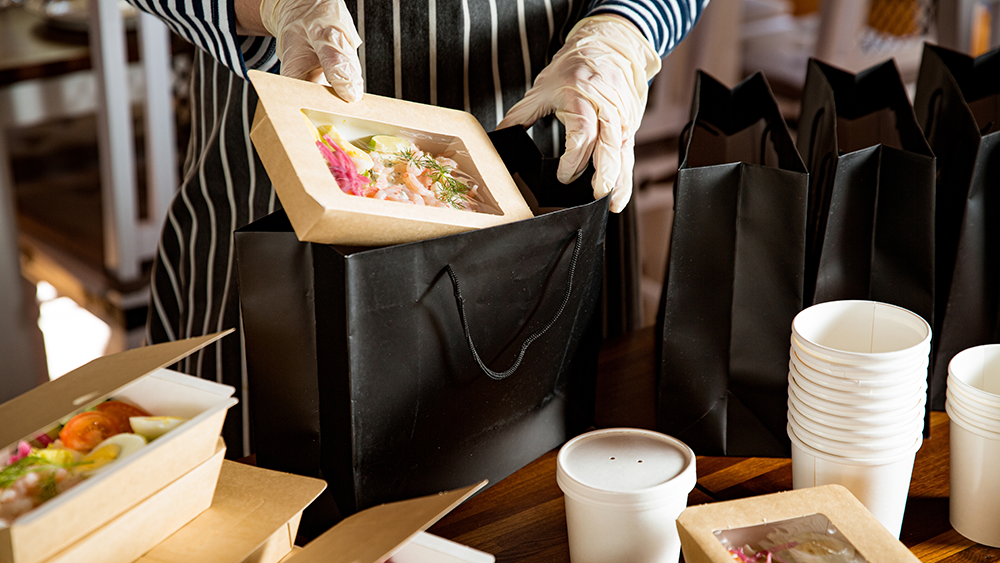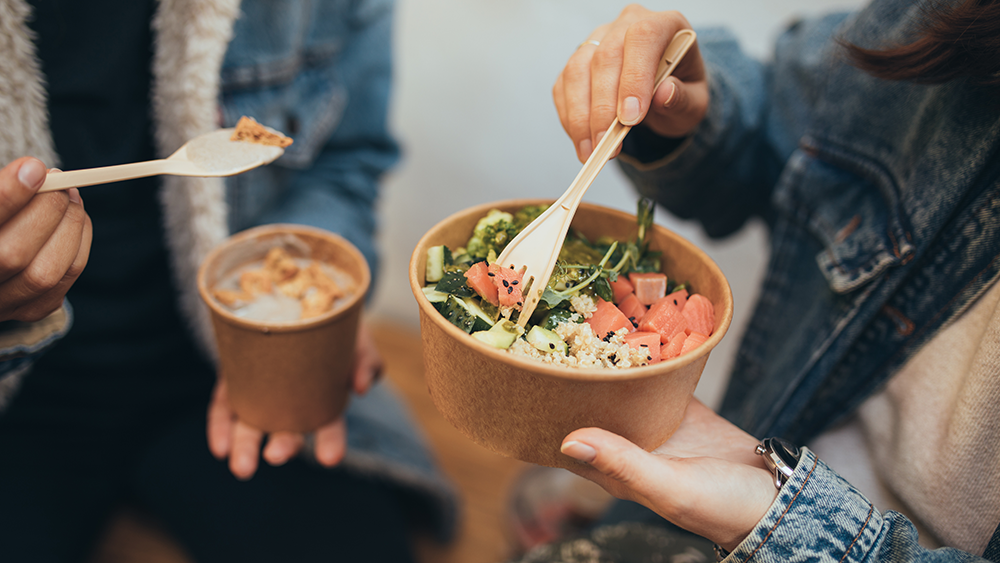By Rebecca Smith, Contributor
In today’s restaurant industry, sustainability is no longer a nice-to-have — it’s expected. Diners are increasingly conscious of the environmental impact of their meals, not just in terms of ingredients, but also how their food is packaged.
For restaurants offering takeout, delivery, or pre-packaged goods, packaging can be a major contributor to waste and carbon emissions. Yet many restaurant owners are hesitant to make the switch to eco-friendly packaging.
The fear is understandable: rising costs, supply inconsistencies, and confusion about materials can make the change feel overwhelming. But sustainable packaging doesn’t have to eat into your profits. When done right, it can support your margins, build brand loyalty, and reduce your environmental footprint all at once.
Why Green Packaging is a Game-Changer for Restaurants
For restaurants, packaging is a key part of the customer experience. From takeout containers and cups to delivery bags and condiment holders, every item represents your brand. Eco-friendly packaging allows you to align your business with the values of today’s conscious consumers, many of whom are actively looking for companies that reduce waste.
When customers see compostable bowls or recycled napkins in their delivery orders, it signals that you care about more than just profits. This emotional connection often results in stronger loyalty and more positive reviews. And those things, in turn, can impact your bottom line more than you'd expect.
Dispelling the Cost Myths of Sustainable Packaging
One of the biggest myths in the restaurant world is that eco-friendly packaging is unaffordable. While some green options do come at a higher unit cost, the bigger picture tells a different story. Many compostable and recyclable containers have become more affordable as demand increases and technology improves.
More importantly, sustainable packaging can reduce other operational expenses. Lightweight materials mean lower shipping costs for delivery. Compact packaging takes up less storage space. And less waste means fewer trash pickups. All of these factors add up to savings that help protect your profit margin.
Finding the Right Eco-Friendly Materials for Your Menu
Not all green packaging is created equal. For restaurant owners, it’s important to choose materials that suit the type of food you serve. Compostable sugarcane containers, for example, are excellent for hot meals. Recycled paperboard works well for dry goods and baked items. Clear PLA containers, made from plant-based materials, are perfect for cold salads and deli items.
The goal is to balance function with environmental responsibility. Your packaging must protect the integrity of your dishes while still being easy to dispose of responsibly. Look for options that are certified compostable or recyclable, and avoid materials like “biodegradable” plastic unless it’s marked for commercial composting.
Designing for Efficiency and Simplicity
Over-packaging is a common issue in the food industry. Wrapping a sandwich in plastic, placing it in a box, and then putting that box into a bag adds unnecessary waste and cost. Eco-friendly packaging starts with simplifying the process.
Use fewer materials by choosing versatile, multi-use containers. For example, a clamshell box can double as both packaging and a serving dish. Custom sizing helps eliminate the need for excessive fillers or extra wraps. Smart packaging design not only looks cleaner but also saves money by minimizing waste.
Reducing Waste Through Portion Control and Reusability
Sustainable packaging also includes strategies like portion control and reusability. Offering smaller portion sizes in compostable cups can reduce food waste while showcasing your green initiative. Encouraging customers to bring reusable containers or offering a deposit-and-return system for high-volume items like sauces or soups can be a great solution for repeat diners.
Even small changes — like switching to compostable cutlery only upon request — can significantly cut down your waste and purchasing costs over time.
Using Eco-Packaging to Strengthen Your Brand Identity
Packaging is one of the few physical touchpoints your restaurant has with off-site diners. That makes it a perfect branding opportunity. With eco-friendly materials, you can print your logo alongside messages about your commitment to sustainability.
Let your packaging tell a story. Include a message that explains what materials you’ve chosen and how they can be properly disposed of. Customers appreciate transparency and love to feel that they’re part of a greater cause. This emotional resonance often leads to word-of-mouth promotion and customer retention.
Sustainability Beyond Packaging
Restaurants that go green in one area often find it easier to continue the journey. Once you’ve switched to eco-friendly packaging, it makes sense to look at other parts of your business. This could include sourcing ingredients from local farms, using energy-efficient appliances, or even redesigning your dining space with reclaimed materials.
If you ever need to move your business — whether it's a kitchen upgrade or relocating to a new neighborhood — you can apply the same mindset. It is important to know how to plan a green move. Look into ways to relocate sustainably by reusing fixtures, reducing moving waste, and working with eco-conscious vendors. Packaging, in this way, becomes just one element of a broader sustainability mission.
Local Sourcing and Greener Supply Chains
Eco-friendly packaging is most effective when paired with mindful supply chain practices. Sourcing packaging from local or regional suppliers reduces shipping-related emissions and shortens delivery times. Many areas now have suppliers who specialize in restaurant-grade sustainable packaging and can offer flexible pricing or bulk discounts.
As you explore local vendors, you may also find other areas for improvement. Packaging is just one part of a green business model. Replacing plastic wrap in the kitchen or switching to reusable cleaning cloths are additional steps that support the same goals.
Training Staff to Support the Transition
Going green is a team effort. Your kitchen and front-of-house staff need to understand not only which packaging to use, but also why it's important. Spend time training them on which containers match which dishes, how to store materials correctly, and how to communicate with customers about your sustainability goals.
When your team is on board, implementation becomes smoother. Staff can help reduce mistakes, prevent unnecessary waste, and even answer questions from curious diners.
Customer Education and Feedback Loops
An important part of making eco-friendly packaging work is educating your customers. Let them know that their takeout box is compostable or that their utensils are made from bamboo. The more you empower diners to understand the impact of their choices, the more they’ll support your efforts.
You can also collect feedback. Ask how customers feel about the new materials or if they have noticed a change in packaging. This not only helps refine your approach but shows your diners that you’re listening — something that builds trust and keeps them coming back.
Final Thoughts: Improving Efficiency
Eco-friendly packaging doesn’t have to hurt your margins. With careful planning, smart sourcing, and efficient design, restaurants can embrace sustainability while still maintaining profitability.
It’s not just about saving the planet—it’s about meeting customer expectations, standing out in a crowded market, and creating a business model that thrives in the long run.
Sustainable packaging is no longer a luxury. It’s a smart, strategic move that aligns with the future of dining. And when done right, it’s not only good for the environment — it’s great for business too.
About the Author:
Rebecca Smith is a passionate content writer specializing in sustainability, small business growth, and eco-conscious living. She helps brands share their green stories with clarity and heart.














